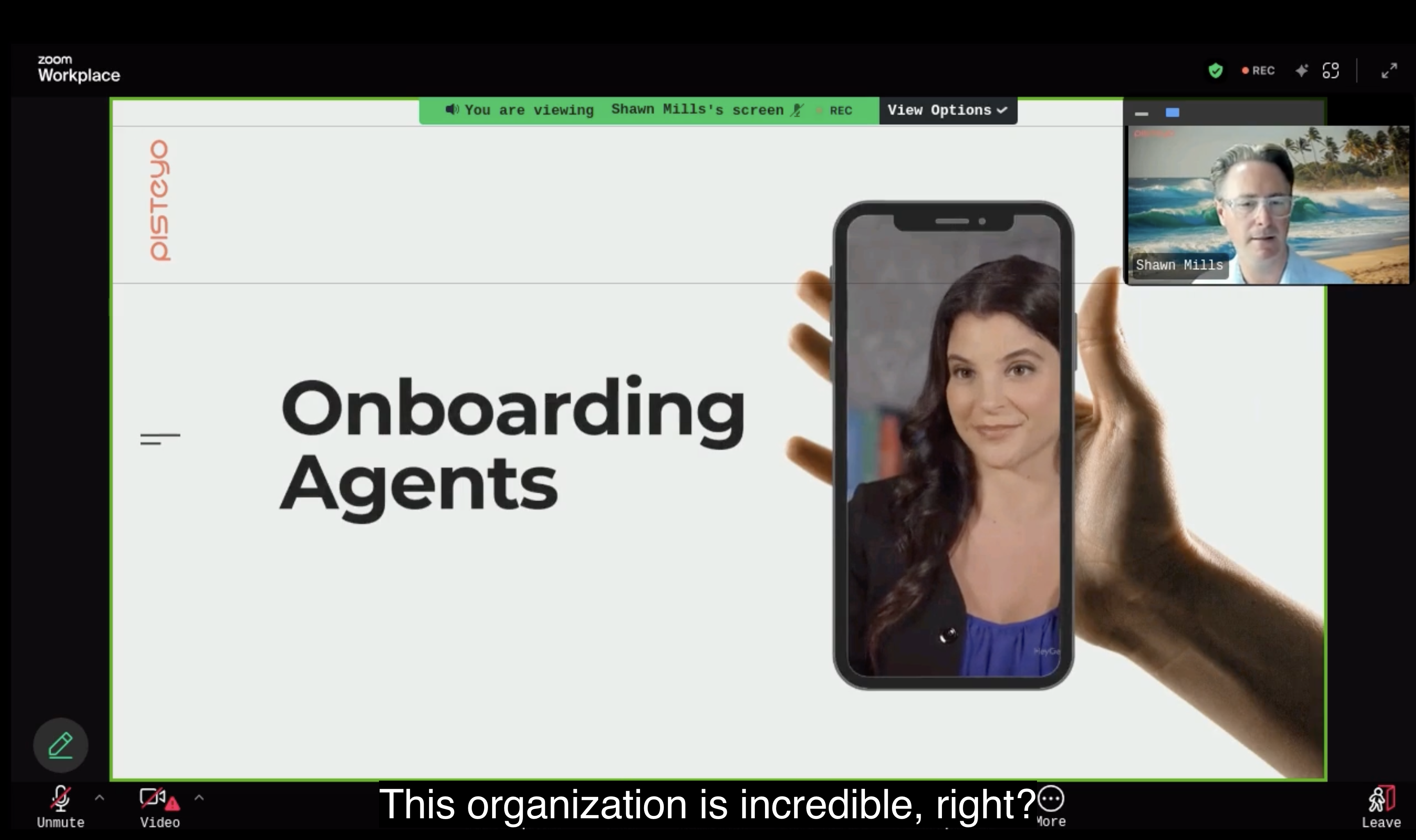Insight Index
- AI is not a replacement for people; it’s a multiplier for human potential.
- The best results come from clear prompts that include role, goal, and context.
- Start small with personal productivity before scaling to organization-wide initiatives.
- Paid, enterprise AI tools protect your data and support responsible use.
- Real impact comes when AI reduces busywork and amplifies mission-driven work.
When I speak with leaders and teams about AI, I usually start with a simple question: What’s your favorite question to ask AI?
It’s a lighthearted opener, but it gets to the heart of something deeper. The way we ask questions determines the kind of answers we get that are not just from people, but from the intelligent tools now sitting right beside us at work. And learning how to ask better questions of AI is becoming one of the most valuable skills any professional can have.
I recently had the privilege of joining Philanthropy Colorado’s Human Resources and Operations Network to talk about this very topic. We discussed how everyday tools like Microsoft Copilot and ChatGPT can help nonprofit and foundation professionals turn routine tasks into time reclaimed for their mission. We didn’t talk about complex algorithms or abstract future technologies. We talked about the real stuff: writing reports, organizing data, training teams, onboarding new staff, and communicating clearly.
Using AI to get the busywork out of the way so we can get back to the meaningful work that drives impact is the most important adoption.

The Shift from Overwhelmed to Empowered
If you work in operations or HR, you probably know the feeling of juggling too many tasks and not enough hours. You’re coordinating people, compliance, payroll, benefits, performance, and communications, all while trying to improve culture and efficiency.
AI isn’t here to replace any of that. It’s here to help.
What I’ve seen across dozens of organizations is that AI becomes most valuable not when it automates everything, but when it takes something small off your plate—something repetitive, tedious, or analytical, so that you can reclaim your time for strategy, creativity, or connection.
That’s why at Pisteyo, we start every conversation with a question that has nothing to do with technology: What are you trying to achieve? Great! We’ll help get you there faster with the help of AI automation.
When we know your goal, we can find the small but powerful ways that tools like Microsoft Copilot or ChatGPT can help. Whether it’s rewriting a policy, summarizing employee surveys, or creating personalized onboarding materials, AI can accelerate your workflow and make your organization more resilient.
AI isn’t JUST about improving productivity, it’s also about creating the time and space for focus and deep work.
Learning to “Talk” to AI
Most of us have spent the last twenty years learning to “Google.” We type a few keywords, hit search, and sift through results. That’s not how AI works.
AI isn’t a search engine, it’s a collaborator. A loyal tool, always willing to please you, but to get great results, you must treat it like a smart intern. You wouldn’t just walk into a room and say, “Make me something good.” You’d give them background, context, and goals. The same applies here.
When you prompt AI, give it a role, a goal, and a bit of context. For example:
“Act as an HR director for a mid-sized nonprofit. Draft a two-page summary for the board on how AI could improve internal communications. Keep the tone professional and clear.”
That’s how you move from average answers to exceptional results.
It’s not about knowing all the commands; it’s about learning to think in terms of clarity, context, and purpose. The better you define your need, the more value you get back.
Practical Ways AI Can Lighten Your Load
During my talk, I demonstrated several practical use cases that any organization can implement today without a PhD or data science team.
- AI Chat Agents for Employee Questions
Imagine never having to answer, “What’s our holiday schedule?” or “Where’s the expense reimbursement form?” again. By creating an AI-powered “employee support assistant,” teams can make policies and FAQs instantly accessible. These agents don’t replace HR, they free HR up to focus on people instead of paperwork. - Personalized Onboarding and Training
Using Copilot or ChatGPT, organizations can create customized onboarding videos, guides, and even interactive chat experiences for each role. It’s more personal, more consistent, and dramatically faster to build. - Smart Document Analysis
Tired of reading dense reports or spreadsheets? AI can summarize a 50-page PDF in seconds, extract key data, and even draft a summary email for your board. I showed how AI can analyze dashboards or survey results and turn them into ready-to-share executive summaries. - Writing, Editing, and Translating
AI can draft job descriptions, grant reports, or internal updates, then translate them into different reading levels or even different regional dialects. You can tell it to “speak in community-accessible Spanish at an eighth-grade reading level,” and it will. Of course, human review is still essential, but the time savings are huge. - Grant Writing and Evaluation
One foundation I spoke with was overwhelmed by the sheer number of grant applications. Using AI, they were able to summarize and score initial rounds of applications based on criteria they set, saving days of work while maintaining fairness and consistency.

Building Trust and Transparency
A big question that always comes up is: “Is this secure?”
My answer is simple. If you’re not paying for an AI tool, assume they’re using your data. The free versions of AI models often collect and train on user input, so for organizational use, I recommend paid enterprise tools like Microsoft Copilot, ChatGPT Team or Enterprise, or Google’s Gemini for Workspace.
When you pay for AI, you’re paying for privacy.
These enterprise platforms have the same security certifications as Microsoft 365 or Google Cloud, they’re HIPAA compliant, SOC-audited, and backed by legal protections. They also respect your existing file permissions, so no one sees data they shouldn’t.
Transparency builds trust, both internally and externally. Tell your teams when and how AI is being used. Show them the benefit. Make sure people understand that AI isn’t about cutting jobs—it’s about cutting the busywork.
Productivity Is Personal
Every organization’s AI journey starts differently, but the ones that succeed all have one thing in common—they start small and start human.
At Pisteyo, we’ve learned that rolling out AI without change management is like planting a seed and forgetting to water it. The technology might be ready, but the culture isn’t. That’s why education and experimentation matter just as much as the tools themselves.
If you’re a leader, your job isn’t to master AI overnight. It’s to help your people see what’s possible and give them space to explore it safely. Encourage your teams to test one task a week—summarizing a meeting, drafting a report, automating a spreadsheet. Measure the impact. Celebrate the wins.
When people see how much time they get back, they stop fearing AI and start embracing it.
From Efficiency to Impact
Efficiency is important. But efficiency without direction just makes you faster at doing the wrong things.
The real opportunity of AI is not to help us do more, instead, it help us do what matters more often.
In the nonprofit and philanthropic sectors, that means spending less time formatting spreadsheets and more time advancing missions, building relationships, and serving communities.
Every organization I’ve worked with has seen the same pattern, once people see AI as a trusted partner instead of a threat, creativity soars, and the culture shifts from reactive to proactive.
AI improve productivity and morale, while giving people back a sense of progress.
How to Get Started
Here’s the best advice I can offer:
- Start with personal productivity. Before automating workflows or building complex agents, help your team learn to use AI in their daily work.
- Create champions. Identify a few team members who enjoy experimenting with AI and let them share their discoveries.
- Set boundaries. Establish clear guidelines on data privacy and use cases so everyone feels safe experimenting.
- Track success. Measure time saved, accuracy improved, and satisfaction gained. AI’s ROI is clearest when you measure it against what used to slow you down.
And most importantly, FOCUS ON WHAT YOU DO BEST
Remember, AI is just a tool, it's true impact comes from the people who wield it.
A Note of Thanks
A heartfelt thank you to Sophie Stewart-Lopes and Erika Fukahara of Philanthropy Colorado for inviting me to speak with your incredible network of HR and Operations professionals. Their thoughtful questions, openness to learning, and commitment to collaboration made the conversation truly meaningful. It’s always inspiring to see professionals who care deeply about using innovation not just to improve efficiency, but to expand impact and strengthen community. I’m grateful for the opportunity to be part of it. If you need guidance integrating AI into your organization please feel free to reach out to the Pisteyo Team.
About the Author
Shawn Mills is the CEO of Pisteyo, a management consulting firm that helps organizations harness AI for operational efficiency, innovation, and impact. With over two decades of experience leading digital transformation initiatives, Shawn believes that the future of work is not about replacing people with machines—it’s about giving people the tools to achieve more meaningful outcomes.












